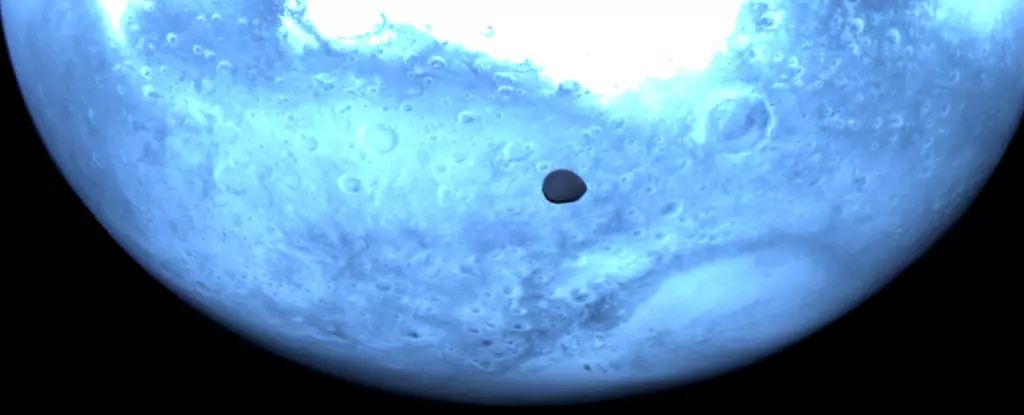As humanity’s thirst for exploration drives our technological advancements, the cosmos continues to reveal its secrets. Recently, the European Space Agency (ESA) launched its HERA mission to investigate the ramifications of a NASA spacecraft impact on the asteroid Dimorphos. This operation not only represents a significant step in our planetary defense strategy but also gifted the world striking images of Mars’ enigmatic moon, Deimos. HERA’s recent flyby of Mars is more than a mere detour; it sets the stage for profound discoveries that could reshape our understanding of the solar system.
The Essentials of HERA’s Mission
HERA is designed to assess the outcomes of the groundbreaking DART (Double Asteroid Redirection Test) mission, which in 2022 bravely collided with Dimorphos to test whether collisions can effectively redirect potentially hazardous asteroids. Aimed at fortifying Earth’s defenses against existential threats, HERA will not reach its target until late 2026, demanding a combination of patience and sophisticated technology. The spacecraft’s trip back to Mars provided not just momentum but an exceptional scientific bonus—a unique opportunity to capture images of the Martian moons, specifically the less-celebrated Deimos.
Deimos: A Puzzling Character in Mars’ Cast
Deimos stands at a modest 12.5 kilometers in diameter and is often overshadowed by its more prominent twin, Phobos. Unlike Phobos, which has garnered considerable scientific interest, Deimos has remained an object of curiosity largely due to its ambiguous origins. The prevailing theories about these moons—whether they originated as captured asteroids or were expelled by massive impacts—highlight the complexities of celestial formation. The images captured by HERA could prove vital in establishing the relationship between Deimos and Mars and whether its genesis can be linked to ancient cosmic events.
Rethinking the Role of Technological Advancements
What makes the HERA mission extraordinary is not merely the images it collected but the technological marvels at its disposal. With the help of sophisticated infrared imagers and the innovative HyperScout technology, HERA was able to analyze the Martian landscape in ways previously thought impossible. The striking visuals, where blue hues replace the expected red, point to the unique data that these instruments can glean from atmospheres and surfaces not visible to the naked eye. As we continue to innovate, the implications for our understanding of Martian geology become all the more promising.
Cosmic Defense: The Urgency of Planetary Protection
The intersection of exploration and defense is underscored by the ESA’s commitment to identifying and mitigating potential asteroid threats. The especially alarming moment when asteroid 2024 YR was deemed to have a more than three percent chance of impacting Earth highlights the fragility of our planet and the need for readiness. Richard Moissl, head of ESA’s planetary defense office, made a salient point: as our observational capabilities improve, we will inevitably discover a greater number of asteroids. It is crucial that we do not merely react to threats but cultivate a proactive stance in our planetary defense strategies.
The Future of Asteroid Monitoring Missions
As the HERA mission progresses, the promise of additional missions grows increasingly tantalizing. The proposed Ramses mission to the 350-meter-wide asteroid Apophis, scheduled for a close flyby in 2029, could offer invaluable insights into asteroids that venture into Earth’s vicinity. If approved, this mission represents an essential component of our broader objective: to establish solid preventative measures against potential cosmic disasters. Each mission brings a wealth of knowledge that helps shape how we view our vulnerabilities in space.
HERA’s recent feats are a testament to human innovation and the relentless quest for knowledge. As we continue to peer into the depths of our solar system, the hope is that each discovery propels us towards a more secure and profound understanding of our celestial neighbors and their secrets. The journey is far from over, but with each advancing mission comes the potential for remarkable breakthroughs that will reshape how we protect and understand our world.


Leave a Reply